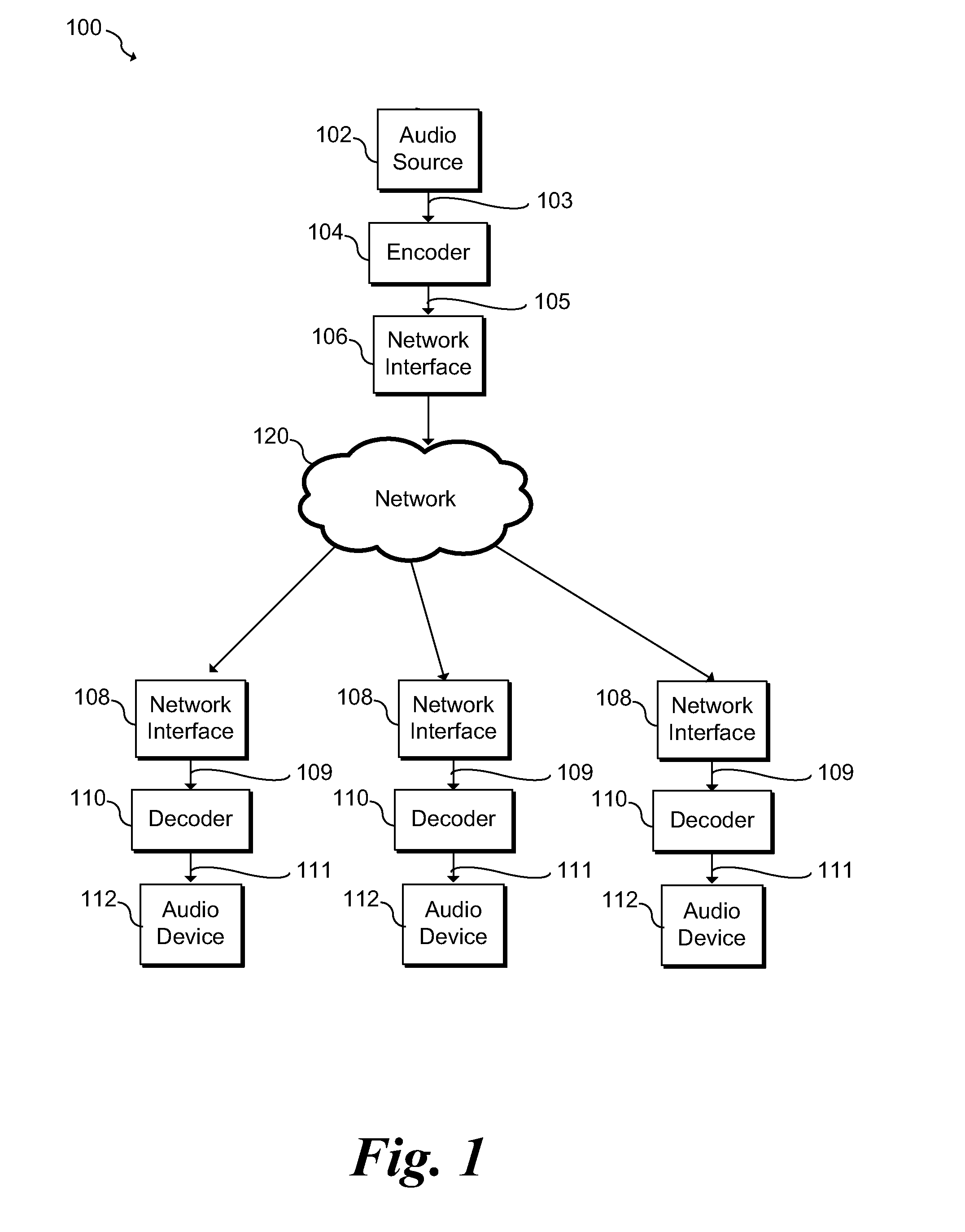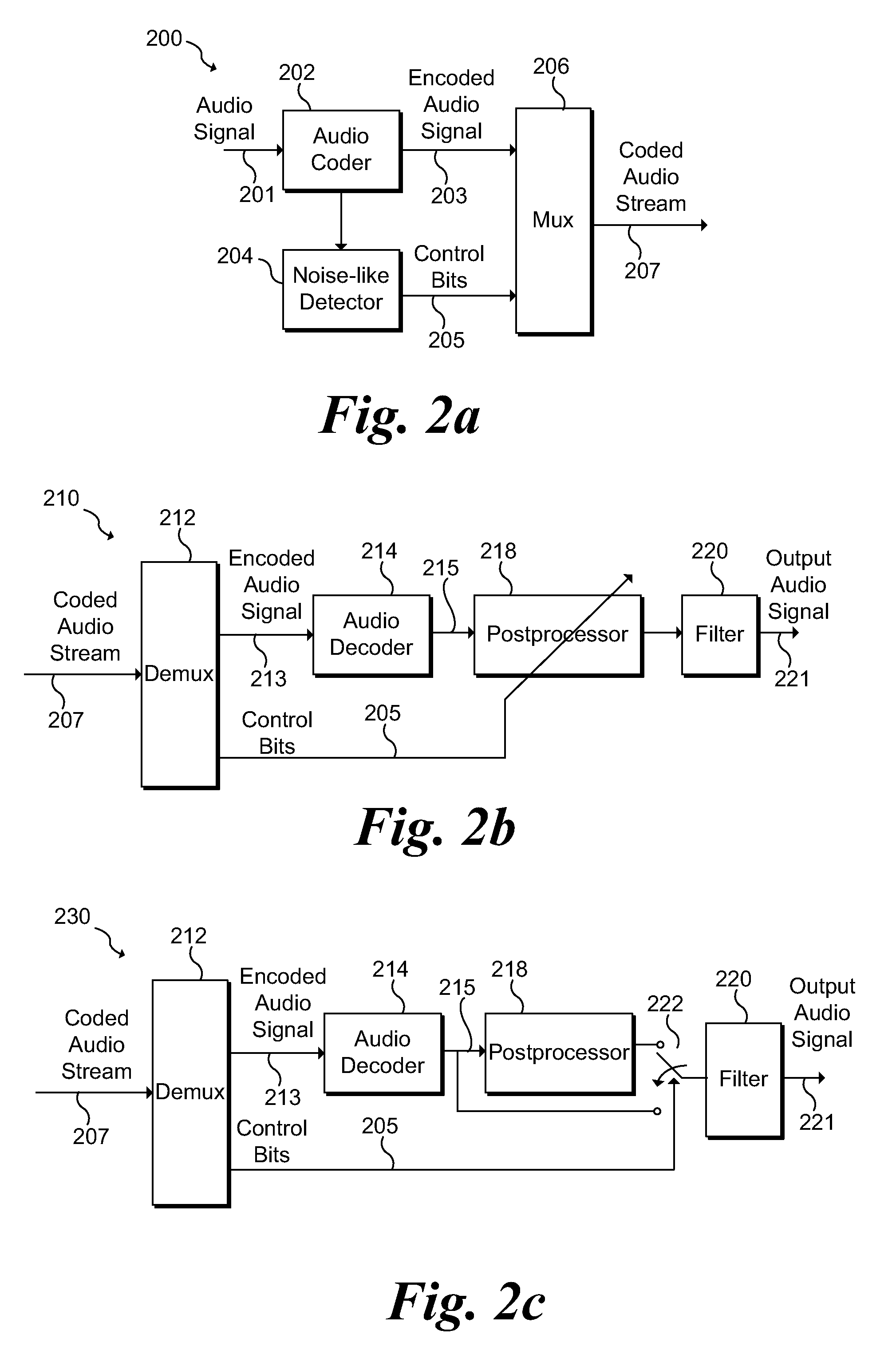Audio decoding based on audio class with control code for post-processing modes
a post-processing mode and control code technology, applied in the field of audio coding and decoding, can solve the problems of decompression signal quality degradation and lower quality decoding signal
- Summary
- Abstract
- Description
- Claims
- Application Information
AI Technical Summary
Benefits of technology
Problems solved by technology
Method used
Image
Examples
first embodiment
[0032]In a first embodiment option, a one-bit post_flag is transmitted to the decoder at each frame. Here, post_flag can assume one of two states. A first state represents a normal signal and indicates to the decoder that normal post-processing is used. A second state represents a noise-like signal, and indicates to the decoder that the post-processing is deactivated. Alternatively, weaker post-processing can be used in the second state.
second embodiment
[0033]In a second embodiment option, one-bit post_flag is used to signal a change in the signal characteristic. When a change of characteristic is detected and post-flag is set to a first state, otherwise for a normal case, post_flag is set to a second state. When post_flag is in the first state, the post processing control parameters are transmitted to the decoder to adapt the post-processing behavior. Additional parameters control the strength of the post-processing along the time and / or frequency direction. In that case, different control parameters can be transmitted for the lower and higher frequency bands.
[0034]In an embodiment noise-like signal detector 312 determines whether the high-band parameters 313 indicate a noise-like signal by first estimating the time-frequency (T / F) energy for each T / F tile. In an embodiment that have a long frame of 2048 output samples, T / F energy array is estimated from the Analysis Filter Bank Coefficients according to:
TF_energy[i][k]=(Sr[i][k])...
PUM
 Login to View More
Login to View More Abstract
Description
Claims
Application Information
 Login to View More
Login to View More - R&D
- Intellectual Property
- Life Sciences
- Materials
- Tech Scout
- Unparalleled Data Quality
- Higher Quality Content
- 60% Fewer Hallucinations
Browse by: Latest US Patents, China's latest patents, Technical Efficacy Thesaurus, Application Domain, Technology Topic, Popular Technical Reports.
© 2025 PatSnap. All rights reserved.Legal|Privacy policy|Modern Slavery Act Transparency Statement|Sitemap|About US| Contact US: help@patsnap.com



